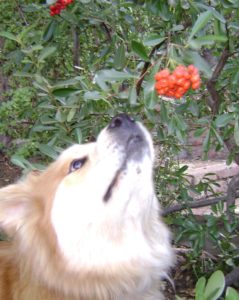 Many common garden and landscaping plants are hazardous to your dog. Delightful to look at and sniff, if your pet ingests any plants on this list, he may experience vomiting, diarrhea, breathing difficulty, bloody or abnormal urine, hypersalivation, weakness, or something else not normal for him. It is a must for you to call your veterinarian at once and bring along (out of paws reach) a sample of the plant. Also, provide your veterinarian with as much information as you can: How long ago did your dog consume it? What part of the plant? What symptoms are presenting?
Many common garden and landscaping plants are hazardous to your dog. Delightful to look at and sniff, if your pet ingests any plants on this list, he may experience vomiting, diarrhea, breathing difficulty, bloody or abnormal urine, hypersalivation, weakness, or something else not normal for him. It is a must for you to call your veterinarian at once and bring along (out of paws reach) a sample of the plant. Also, provide your veterinarian with as much information as you can: How long ago did your dog consume it? What part of the plant? What symptoms are presenting?
This list does not contain EVERY poisonous plant, but it is a good place to start for most gardens and parks. If you cannot keep your dog away from any of these, it just might be best to remove them from your yard.
When you have a dog or cat, you have a four-legged toddler for life, and it is your responsibility to supervise where your pet goes and what dangers he may encounter. Take the Pet Safety Crusader’s PET FIRST AID COURSE to learn how to help your dog or cat when he ingests a poisonous plant or gets into any other doggie danger or catastrophe!
Toxic Plants include:
Aloe Vera
Amaryllis
Baby’s Breath
Begonia
Carnations
Castor Bean
Chrysanthemum
Cyclamen
Daffodil
Gladiolus
Grass Seeds
Hosta
Ivy
Milkweed
Morning Glory
Oleander
Poinsettia
Pothos (Devil’s Ivy)
Rhododendron (or Azalea)
Sago Palm
Tomato Plant
Tulip
Yew









